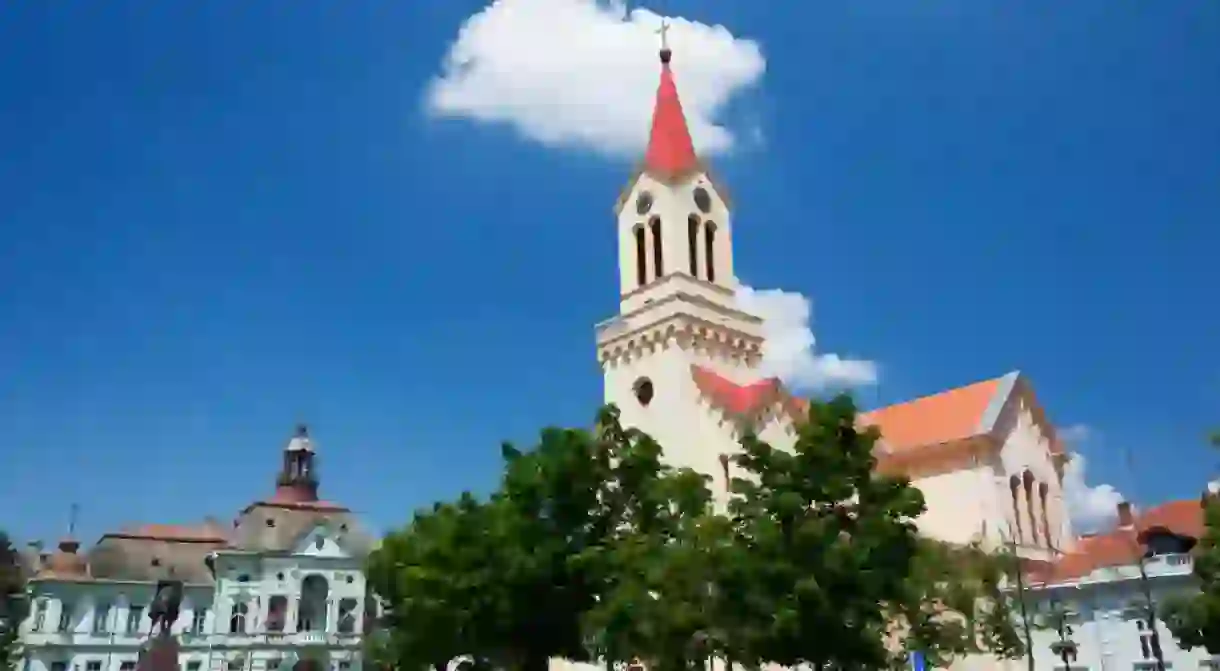Top 10 Things to Do in Zrenjanin, Serbia

Zrenjanin is a tricky city to pin down. It is home to some of the finest architecture in the entire country, but it is difficult to shake the feeling of neglect that permeates its streets. Desuetude or not, there is plenty to do in Vojvodina’s third largest city.
Relax on Freedom Square
Trg Slobode is the heart and soul of Zrenjanin, its main square and where most of the town’s most impressive buildings can be found. Pretty much everything worth seeing and doing in the city itself is accessible from the plaza, which features a statue of King Petar I in its middle. The many magnificent buildings that ring the square deserve individual attention, but no trip to Zrenjanin is complete without a little bit of tranquility in the belly of Petrovgrad.

Try to work out Serbia’s weirdest bridge
You don’t need to be a bridge expert to know that the structures are built in order to traverse a physical obstacle, be it a river, road, lake or whatever else. Zrenjanin is known as the ‘City of Bridges’, but its most famous bridge doesn’t actually have any use whatsoever. Built in 1962, the Dry Bridge became superfluous when the course of the Begej river was diverted, but all plans to knock it down have been contested by a populace who see it as a curious monument of the city. ‘Curious’ is definitely the correct word for it.

Architectural feast or famine on the main street
Kralja Aleksandra I Karadjordjević street is the main thoroughfare in Zrenjanin, a long pedestrian street lined on both sides with cafes, shops, restaurants and the rest. Some of the most impressive architecture in Vojvodina can be found here, with few buildings as impressive as the Moorish Scheherazade. Benceova Kuća comes a close second, a Viennese beauty that was the first modern building on the entire street.
The intrigue of Zrenjanin is best seen on this street, as beautiful Habsburg era buildings sit next to ones that have seen better days. Some of the street’s most majestic structures are in a state of total disrepair, with none more jarring than the former Fontana sweet shop. Zrenjanin is a beautiful town, but one that needs a bit of loving care.

Explore the National Museum
Another delightful building in the city centre, Zrenjanin’s National Museum is likely the best museum in the city. The history of the Central Banat region is explored through exhibitions and installations, with weaponry, art and fashion getting some extra attention. The artefacts are spread out through a number of exhibition spaces, but the impressive architecture of the building itself may well be its most endearing characteristic.
A beer too many on Gimnazijska
Another street that has seen better days, Gimnazijska remains a fun place to explore in the day and to imbibe when the sun clocks off. Kafemat and Biblioteka are the street’s liveliest joints, with Paradise and Alter Nativa offering a different energy nearby. The former is missing the ‘P’ from its facade, encouraging interesting questions about the reality of achieving nirvana. The letter was simply blown off during a storm, but fiction is more interesting than fact.

Enjoy unique religious architecture
Most Serbian towns will feature Orthodox Churches front and centre, but Zrenjanin bucks this trend with the Cathedral of St. John of Nepomuk on its main square. There are a number of pretty churches nearby, with the Orthodox temple on Miroslava Tirše particularly delightful. The white tower of the Reformation Church seems to glisten on the other side of the Small Bridge.

Beer Days, beery nights
Zrenjanin hosts plenty of festivals throughout the year, but few inspire as much excitement as the self explanatory Beer Days in August. An annual institution for over 30 years, the festival sees people descend on Vojvodina’s third largest city with thirst quenching at the front of their minds, and plenty of the amber nectar waiting to be enjoyed. There is usually a competition to see who can down a beer the quickest too, although we’re yet to enter. Maybe this is our year!
Serbia’s oldest theatre
The oldest theatre in the country, Zrenjanin’s Toša Jovanović theatre was built in 1839 and still puts on quality entertainment to this day. Rumour has it that the theatre was commissioned when a local count fell in love with an actress from Budapest, and he felt that the only way to get her to Zrenjanin (then Bečkerek) was to build a theatre. A local warehouse was chosen for the purpose, and an elegant house of culture is the result.
The brewery that started it all
That title might give the impression that Zrenjanin’s brewery led to the birth of the city, but the truth is it almost brought about its end. Much of the impressive architecture of the city came about following a massive fire in 1807, a blaze that began at the then-functioning brewery. The production of beer has long since stopped, but the pivnica remains a fine place for an evening meal. The knowledge of history adds an extra layer of interest to that.

Romance at Ečka
Those looking to get out of the city and in the surroundings must absolutely make a beeline for Ečka, one of the most romantic spots in a wildly passionate country. Kastel Ečka is just seven kilometres from Zrenjanin, a magnificent estate that once played host to the musical talents of Franz Liszt among others. A fine restaurant provides sustenance to those that require it, but the real charm lies in the architecture of the castle and the gardens that surround it.














